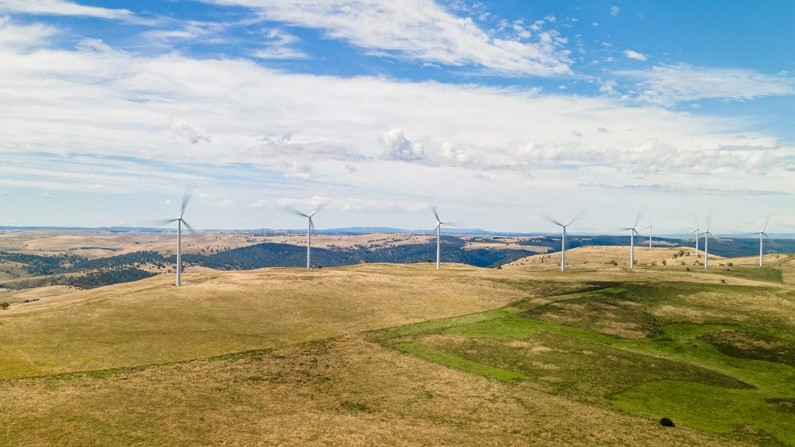
Development Steps
The first step a developer will take is to identify if your site has potential. This involves conducting site assessments to determine the suitability of the land for wind development. Factors such as wind speed, topography, neighbours and environmental and visual impacts are all considered. During this process a developer may want a landowner to sign an exclusivity agreement and landowners should take advice before signing anything.
Once its potential has been confirmed, the developer’s next step is to secure the necessary land rights, approvals and permits. This can include obtaining planning permission from the local council, securing a land option and lease from the landowner, connection to the electricity grid, as well as securing any necessary environmental or wildlife permits.
Only then can a developer begin construction, which typically involves accessing the land, installing the foundations for the wind turbines, assembling the turbines and building electricity lines to connect the wind farm to the national electricity grid.
It’s a long process that can take on average five-seven years. Landowners will want to protect their interests as the developer moves through the stages.
Unlock opportunity
The potential financial gain from leasing your land for wind farm development is significant, providing a steady rental income, as well as the potential for additional revenue rent from the sale of the energy generated by the wind farm if it performs well.
In addition to the financial benefits, developing land for onshore wind projects can also have a positive impact on the surrounding environment through habitat management and biodiversity net gain requirements. Onshore wind energy is also a clean and renewable source of power. More wind farms can help to reduce the UK’s reliance on fossil fuels, which increases energy security and combats climate change.
The development of wind farms can also bring economic benefits to the local community. Many of these projects create jobs and stimulate economic growth, particularly in rural areas where they are often located. This can help to support local businesses and provide a boost to the local economy. Wind farms also provide community benefit payments which can be spent on valuable local community projects.
Consider the risks
As with any opportunity, there are risks.
The development process is complex and can take years. During the development process, restrictions will be in place on how landowners can use their land – and there is no guarantee that a project will be approved at the end of the process.
The developer will run this process, but a well-advised landowner will have some control with specific milestones in place. It seems likely that the ban will only be lifted partially, so English landowners will want to make sure they partner with developers who can clear the higher planning hurdles for English wind projects.
There can be uncertainty around the electricity market. The price of energy can fluctuate, so it’s important to ensure that the rental deal agreed is fair for the landowner.
Wind farms can also have an impact on the surrounding landscape and wildlife. This can be a concern for landowners with large estates or valuable natural habitats on their land. Careful planning and mitigation measures may be needed to minimise these impacts, but it is also crucial that a landowner is able to protect their longterm assets and access additional revenue streams available.
As with all development in rural areas, sometimes neighbours can be concerned about proposals to develop land nearby. All this means that landowners should take advice to carefully assess the developer and their track record before committing to a wind farm development.
Taking the plunge
Before signing anything with a developer, landowners must consider the offer being made and this is where expert advice is crucial. A good advisor will negotiate detailed terms with the developer on your behalf, ensuring land and assets are protected.
If a landowner has not been approached by a developer but is keen to explore opportunities in the wind sector, a property advisor can tender your land to developers with a good track record. They can also protect you from landbanking speculators who seek to buy up land with potential for development.
Neighbouring landholdings can also benefit from wind farm developments if, for example, access is required across that land. This can be financially rewarding for those property owners who have sound agreements in place.
Successful onshore wind projects can provide real economic benefits to landowners. Many projects offer landowners rental payments for the use of their land, which means this steady rental income can be particularly beneficial for those who own large tracts of land that may not be suitable for other forms of development or profitable agricultural uses.
Onshore wind has effectively been banned in England since David Cameron’s government removed subsides and toughened planning regulations. This potential shift in policy under Rishi Sunak, who has said his government will not refuse consent for wind farms where there is community support, would be an important milestone in the development of Britain’s renewable energy strategy and a green economy.
Switched-on English landowners can ensure they are prepared and ready for the opportunities that are likely to arise in the coming years.




































